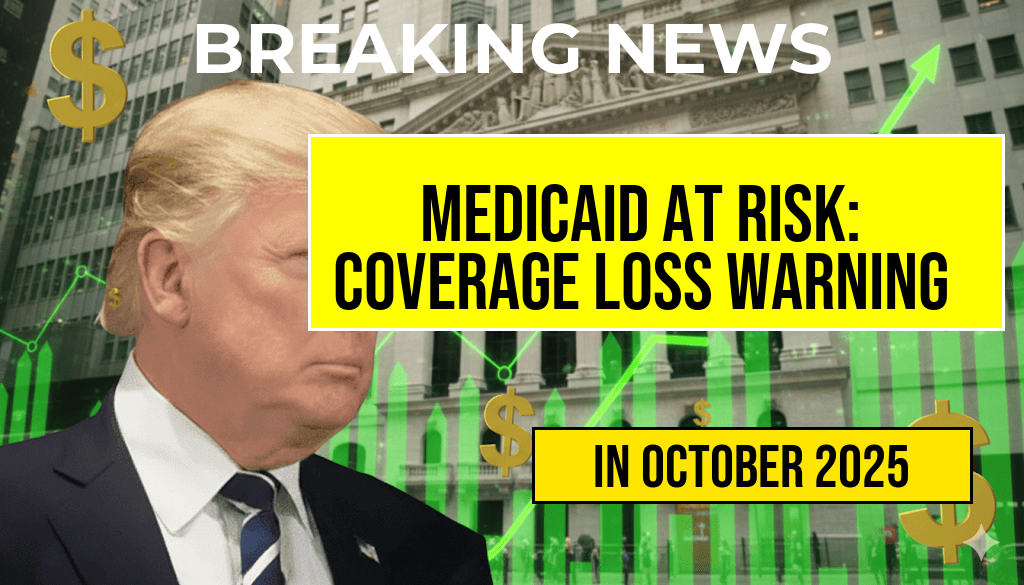Medicaid at Risk: CBO Warns Millions Could Lose Coverage Over Potential $1,000 Emergency Room Bills
The Congressional Budget Office (CBO) has issued a stark warning that potentially millions of Americans enrolled in Medicaid could face losing their coverage due to the prospect of encountering unexpected $1,000 emergency room bills. As policymakers debate proposed changes to eligibility and billing practices, concerns grow over the financial stability of vulnerable populations who rely heavily on Medicaid for essential healthcare services. The report indicates that sudden, high medical costs could push many recipients into financial hardship, leading to increased coverage gaps and uncompensated care burdens for hospitals. With Medicaid serving over 80 million Americans, the implications of these potential shifts ripple across communities, hospitals, and federal resources alike.
Understanding the Medicaid Landscape and the Role of Emergency Care
Medicaid provides critical health coverage to low-income individuals, children, seniors, and those with disabilities. Managed jointly by states and the federal government, it accounts for nearly one-third of all federal health spending. Emergency room visits constitute a significant portion of Medicaid expenditures, often serving as the primary access point for urgent care among underserved populations.
The CBO report highlights a growing concern: if Medicaid enrollees face bills of around $1,000 for emergency services—either due to policy changes or gaps in coverage—many could be unable to pay. This financial strain risks leading to coverage lapses, as unpaid bills can trigger automatic disenrollments or deter individuals from seeking care altogether, compounding health disparities.
Potential Policy Changes and Their Impact
Several legislative proposals under consideration could alter Medicaid eligibility or billing processes, inadvertently increasing out-of-pocket costs for enrollees. Notably, efforts to introduce more stringent income verification or to implement higher copayments aim to curb spending but may disproportionately affect vulnerable populations.
According to the CBO’s recent analysis, these initiatives could lead to a significant drop in Medicaid enrollment—potentially affecting millions—if beneficiaries are unable to afford rising bills or are deterred by the prospect of costly emergency care.
Financial Risks for Enrollees and Healthcare Providers
| Scenario | Estimated Number of Affected Individuals | Potential Outcomes |
|---|---|---|
| High copay policy enacted | Up to 12 million | Coverage losses, medical debt, deferred care |
| Reduced eligibility thresholds | Approximately 8 million | Disenrollment, increased uncompensated care |
| Unchanged policies | Current enrollment levels maintained | Continued access, but risk of bills without coverage support |
For individuals, the prospect of facing a $1,000 emergency room bill can be financially devastating, especially for low-income families already living paycheck to paycheck. Without adequate coverage or assistance, these expenses may lead to debt, missed payments, or even bankruptcy. Healthcare providers also bear the burden, as unpaid bills contribute to the financial instability of hospitals serving low-income communities, potentially impacting service quality and availability.
Policy Experts Weigh In
Health policy analysts warn that the potential fallout extends beyond immediate billing issues. Dr. Sarah Johnson, a healthcare economist with the Urban Institute, emphasized that “reducing coverage or increasing out-of-pocket costs discourages preventive care and complicates chronic disease management, ultimately leading to higher long-term costs for both patients and the system.”
Meanwhile, advocates for Medicaid expansion and consumer protections argue that safeguards should be strengthened, not weakened, to prevent millions from losing vital coverage amid rising healthcare costs.
Moving Forward: Balancing Cost and Care
As legislative negotiations continue, stakeholders are calling for policies that protect vulnerable populations from unexpected financial burdens while ensuring the sustainability of Medicaid programs. Strategies under consideration include expanding income-based subsidies, capping emergency billing, and enhancing outreach to ensure enrollees understand their coverage options.
The challenge remains to strike a balance between controlling costs and preserving access. Failing to address these issues risks undoing years of progress in reducing health disparities, especially among marginalized communities who depend on Medicaid as their primary health safety net.
For more information on Medicaid and healthcare funding, visit Wikipedia’s Medicaid article or the Forbes analysis of Medicaid expansion.
Frequently Asked Questions
What is the main concern regarding Medicaid coverage highlighted in the article?
The primary concern is that millions of Americans could lose their Medicaid coverage due to potential $1,000 emergency room bills that may lead to financial hardship or loss of eligibility.
How does the potential $1,000 emergency room bill impact Medicaid recipients?
The potential $1,000 bills could cause financial strain on Medicaid beneficiaries, possibly resulting in loss of coverage if they are unable to pay or if it affects their eligibility status.
What role does the Congressional Budget Office (CBO) play in this warning?
The CBO has issued a warning about the possible coverage losses and financial risks associated with the upcoming changes that could impose new costs on Medicaid recipients.
Are there any proposed solutions or policy changes discussed to prevent coverage loss?
The article discusses potential policy adjustments that could help protect Medicaid recipients from unexpected emergency room bills and prevent unnecessary coverage loss.
What can Medicaid beneficiaries do to prepare for possible changes mentioned in the article?
Beneficiaries are encouraged to review their coverage, understand their financial responsibilities, and stay informed about policy updates to mitigate the risk of losing Medicaid due to unforeseen medical bills.

Leave a Reply